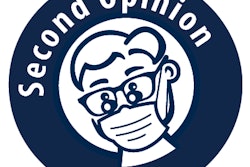
In the first part of this series, Patti DiGangi introduced the new Code on Dental Procedures and Nomenclature (CDT) 2017 code D4346. She wrote that this code fills a gap in exiting insurance codes and has the power to finally bring the medical relevance to gingivitis treatment. The second part of her series offers case examples and discusses opportunities for practices.
Periodontal charting for everyone
To understand code D4346, let's look at two cases. Both patients are 6 years old and traditionally have been treated the same. Traditionally, children have not had a periodontal chart, but practitioners need to begin earlier documentation to support use of this new code and a more accurate recognition of disease and care plan.
 Patti DiGangi, RDH.
Patti DiGangi, RDH.The first patient is a cute, slightly round boy whose mom brought him in because significant problems were found during a school screening. As is standard in many practices, this patient is scheduled with the hygienist for a 30-minute appointment.
Usually the hygienist will take a couple of bite-wing images, complete a dental charting, perform a child prophylaxis and apply fluoride, and then call the dentist for an exam. However, when the hygienist looks in the boy's mouth, multiple problems are immediately evident. With just a mirror, she sees a mouth full of decay, and his gum tissue is red, swollen with black-line subgingival calculus. His gums also bleed during probing.
The second patient is a girl who has been a patient in the same practice since she was 1 year old. Her mom is very aware of the potential of vertical transmission of disease between family members and practices prevention on many levels.
The second patient is the youngest of three siblings with no caries experience. Her mother oversees oral care and diet. The hygienist also has a great relationship with this child, who immediately tells the hygienist at the beginning of her visit that she lost her two top front teeth, and the ones next to the missing ones are wiggly too, so she isn't brushing in that area.
“This new code can potentially close the loop and elevate our standard of care.”
Both patients have gingival inflammation. Both children are at risk for systemic issues and could have systemic issues influencing the inflammation.
However, one of these children qualifies to be treated under the new D4346 code, while the other is not completely healthy yet does not qualify under the new code? Why? What is the difference?
The answers aren't just in the code. The answers are their individual diagnosis and levels of inflammation. Every patient, regardless of age, needs to have a periodontal chart. This code is not age-based and the supportive materials need to show the condition being treated.
Where is the opportunity?
We can finally treat gingivitis after decades of merely dumping gingival inflammation into the same category as health. This new code can potentially close the loop and elevate our standard of care. With increasing research pointing to the connection between oral disease and medical conditions, the timing is perfect. There is no age restriction, so this code is relevant to virtually all patients. Early recognition ensures earlier intervention and disease prevention.
We know gingivitis is contagious. CDT 4346 can help us prevent its spread among loved ones and others. This may be the next best thing to a vaccine. And finally, the code increases the medical relevance of dental care and can be a catalyst for increased dental-medical collaboration.
Moreover, accurately diagnosing also provides specific reasons for patients to return. Being due for a hygiene appointment does not hold as much weight as it did in the past. Oh, and there is the profitability aspect. Fees for this therapeutic care should not be the same as for preventive care. Helping patients be healthy, creating greater connections with medical care providers, and increasing profitability -- isn't that we all seek?
Portions of this column originally ran in A Gingivitis Code Finally! DrBicuspid.com appreciates the opportunity to reprint.
Patti DiGangi, RDH, is an international speaker and the author of the 2016 book A Gingivitis Code Finally! the fifth book in the DentalCodeology series. She also authored a chapter in CDT 2017 Companion. She can be reached at www.dentalcodeology.com or [email protected].
The comments and observations expressed herein do not necessarily reflect the opinions of DrBicuspid.com, nor should they be construed as an endorsement or admonishment of any particular idea, vendor, or organization.



















